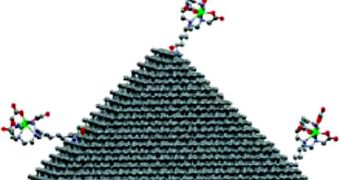Over the past few years, magnetic resonance imaging (MRI) has become one of the most widely used investigation techniques in medicine. Its amazing capabilities, of producing detailed, 3D images of what is going on inside the body, without actually having to use surgery to look at the organs directly, helped save many lives. It can view even special tissues such as tumors, with the help of contrast agents. Just recently, researchers have managed an innovation in this field, when they have created an MRI contrast agent that is about 15 times more sensitive than any existing one, Technology Review reports.
In addition to being able to make the observation target more clearly visible, the new contrast agent will also be used in smaller quantities, which means that patients will be subjected to smaller amounts of it. Existing chemicals that perform this function have been linked to a number of side-effects, and researchers working in this field struggled to create the new approach, which kills two birds with one stone. The study was conducted at the Northwestern University Center for Advanced Molecular Imaging, and details of the achievements are published in last month's issue of the respected scientific journal Nano Letters.
The contrast agent was produced by binding ions of the rare-earth metal gadolinium with tiny clusters of carbon atoms, arranged as a nanodiamond. Gadolinium is generally used as such an agent because it has important paramagnetic properties, which means that it responds to an externally applied magnetic field by becoming magnetic itself. The catch is that the metal is toxic when used all by itself, so many research groups around the world have been working on methods of binding it with various types of molecules, ranging from nanoparticles to organic materials, for use in MRI.
“We've done this with many classes of nanoparticles and have never seen this extraordinary increase in sensitivity,” the Eileen M. Foell Professor of Chemistry and Director of the Center for Advanced Molecular Imaging, Thomas J. Meade, explains. The expert collaborated closely with colleague and nanomaterials expert Dean Ho, who is also an assistant professor of biomedical and mechanical engineering at NU. Nanodiamonds were eventually selected because they caused little changes inside the host cells, and also did not influence the expression of genes in any way.

 14 DAY TRIAL //
14 DAY TRIAL //